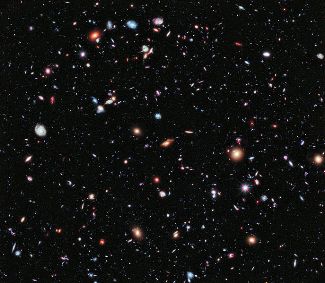Why is the Expansion of the Universe Accelerated?

At the beginning of the thirties the works of Edwin Hubble, on the experimental or, if preferred, the observational side, as well as those of George Lemaître on the theoretical, showed that the distances between the far away galaxies, as well as their distances to us, are increasing. In other words, the Universe is undergoing a process of expansion. In consistency with Einstein’s gravity this expansion should not be understood as if the galaxies were moving on their own but on the sense that the space between them augments with time. Due to a series of reasons, it was deemed that the rate of expansion was decreasing whereupon the increase of distances would slow. This corresponds to the Einstein-de Sitter paradigmatic model in which the dominant form of energy is pressureless matter. This belief was firmly held till nearing the close of the past century. Precisely at that time it was observationally noticed that the said rate was increasing since recent epochs; i.e., at present the expansion is accelerated. This discovery by Perlmutter, Riess and Schmidt (among others) was awarded with the Nobel Prize of 2011.
The accelerated expansion implied (and continues to imply) serious theoretical problems. The simplest solution proposed involves the existence of a further energy component, but this one endowed with a high negative pressure (while small negative pressures are easily produced in the lab, the huge negative values required were almost out of question). A large variety of explanations have been offered but, for the time being, none of them have obtained general acceptance.
Whatever the correct answer, it must agree with the laws of physics; among others with the laws of thermodynamics. The second of these, implicitly discovered by Sadi Carnot in 1824, and formulated a few decades later by Clausisus and Kelvin, simply acknowledges that any system tends spontaneously to the thermodynamic equilibrium and that, sooner or later, it will reach equilibrium provided the system remains isolated. In mathematical parlance it asserts that the entropy of any macroscopic system plus its surroundings never decreases, and that it tends to a maximum which characterizes the equilibrium state. This accounts, for instance, for the fact that the transfer of heat between two bodies proceeds from the one of higher temperature to the colder one.
By applying the above to the Universe as a whole it is found that it will tend to the said equilibrium state if its expansion is accelerated, and not if it is decelerated, and this is so regardless of the agent behind the acceleration. Altogether, the expansion of the Universe is accelerated because, after all, it is an ordinary macroscopic system; i.e., it complies with the thermodynamic laws as any other does. Thus far there is no knowledge of a macroscopic system alien to these laws.
References
Radicella, Ninfa; Pavón, Diego. A thermodynamic motivation for dark energy. General Relativity and Gravitation 44(3): 685-702. 2012. DOI: 10.1007/s10714-011-1299-y.
Pavón, Diego; Radicella, Ninfa. Does the entropy of the Universe tend to a máximum? General Relativity and Gravitation 45(1): 63-68. 2013. DOI: 10.1007/s10714-012-1457-x.


